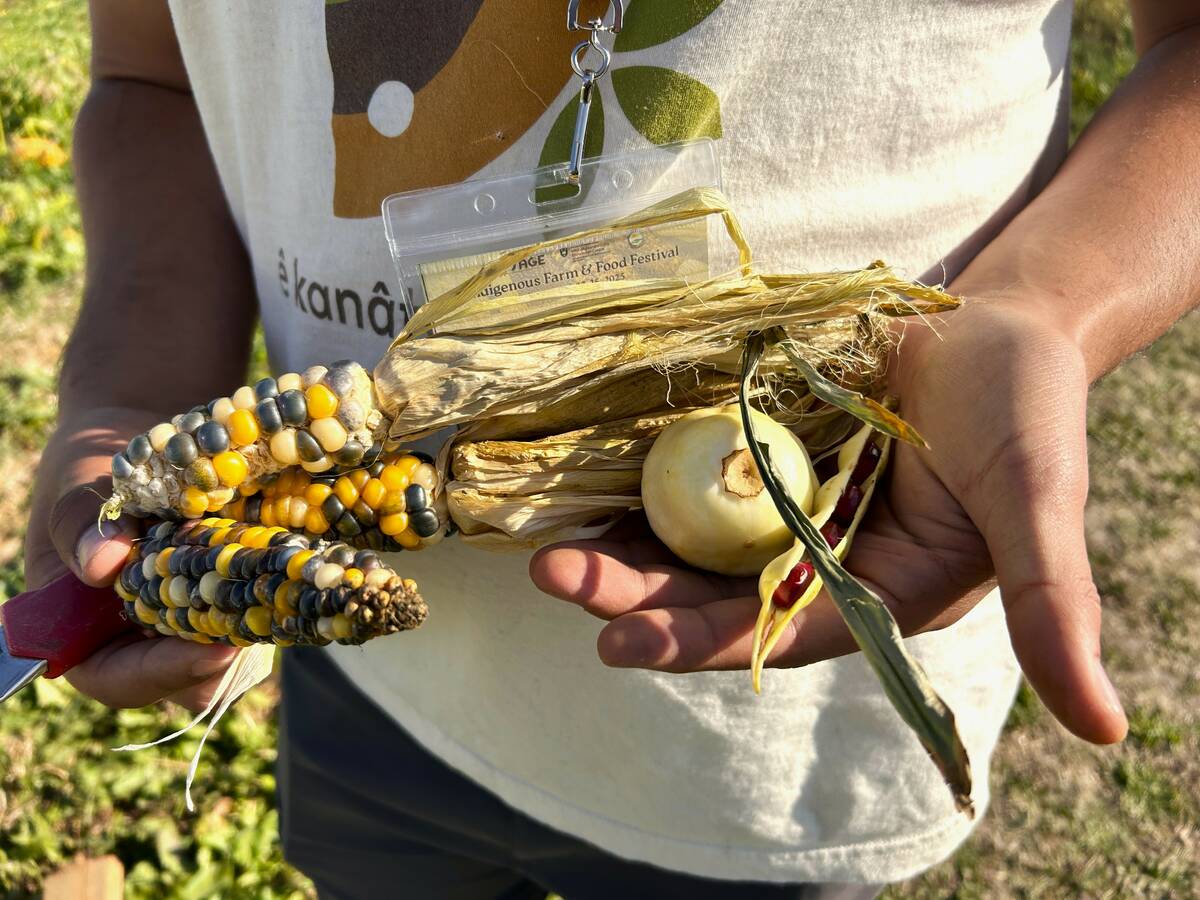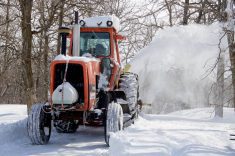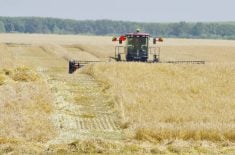Overview
Harvest progress sits at 32 per cent completed across the province, with rapid progress over the past seven days. This puts harvest completion approximately 10 harvesting days behind the 5-year average of 65 per cent completed by this time.
Cereals
Read Also

Regenerative practices meet Indigenous knowledge on the Prairies
What do traditional Indigenous agricultural practices and regenerative agriculture have in common? Quite a lot it turns out.
Winter cereal grains
Fall rye harvest is complete. Reported yields were between 45 to 110 bu/acre, averaging between 75 to 90 bu/acre. Higher levels of ergot have been reported in fall rye, but grain quality has been good.
Increased fall rye acres are expected in the Interlake region, and declining from last year’s planted acreage in the Central and Eastern regions. Seed dealers are suggesting that high spring cereal yields are a factor for the drop, as well as a delayed harvest, while many parts of the Interlake were unseeded this spring and able to be planted this fall.
Winter wheat is also complete, yield reports are between 30 to 80 bu/acre, averaging in the 60 to 70 bu/acre range.
Spring cereal grains
Spring wheat harvest is ongoing in all regions, and wrapping up in the central region as producers move into canola crops. Good harvesting weather has aided producers, and grain quality remains high.
CWRS wheat is mostly grading No 1, protein has ranged between 13.5 to 14.8 per cent. Ergot levels are slightly elevated from previous years.
Harvest has progressed in the past week with 31 per cent harvested to date. Yield averages are reported between 60 to 70 bu/acre across the province, with many farmers pleasantly surprised by slightly higher average yields than expected.
Barley harvest has begun with average yields of 65 -90 bu/acre, most commonly in the 60 to 70 bu/acre range in the Southwest region.
Oat harvest has progressed in all regions. Farmers are reporting widespread average yields that are slightly below expectations, generally averaging 120 to 130 bu/acre, with test weights in the 44 to 48 lb/bu range.
Corn
Corn development has reached R5 (dent) stage, with the milk line one-third of the way down the kernel – depending on hybrid.
Silage cutting on earlier maturing hybrids may begin in the next week or two.
Oilseeds
Canola
Canola harvest has begun across Manitoba, pre-harvest desiccation continues as crops reach the correct stage. Swathing is common on uneven fields. Late seeded fields are still in the pod-fill stage, but approaching 50 per cent seed colour change.
Average canola yields reported to date sit between 45 to 55 bu/acre, in all regions where extreme spring flooding and severe summer rains did not stress the crop excessively. In those affected areas, canola yields are around 10 bu/acre.
Extreme flea beetle and early planting stress on the earliest canola crops has negatively impacted yield, and yield reductions compared to later seeded canola are common and expected by many.
Canola harvest will rapidly progress this week given favourable weather.
Verticillium stripe is commonly being found in many canola fields by growers and as part of the disease
survey.
Flax & sunflowers
Flax crops are still turning colour, with patches of brown and green commonly found in the same field. Plants are reaching 75 per cent brown boll stage (physiological maturity), but no desiccation has started yet.
Sunflowers are in the R7 to R8 stages. Significant aphid pressure has caused plants to dry down rapidly, but yield seems unaffected so far. Grasshopper feeding on leaf tissue is high on headlands in areas where other crops have already been harvested.
Pulses
Soybeans have reached the late R6 to R8 stages, and are showing marked differentiation based on maturity grouping this week. Harvest has started on the earliest planted (and early maturity class) soybeans in the Roland area, while fields across the province range from nearly fully green canopy to R8, with complete leaf drop. Most crops are yellowing and rapidly shedding leaves this week.
Soybean fields are rapidly turning colour on the earlier varieties, and remain quite green on the longer- season varieties.
Grasshoppers are finding their way back into green soybeans after nearby cereal crops are cut in the Dauphin area. Aphid populations are rising in soybeans in the Portage la Prairie area, while other areas are seeing less insect pressure as crops mature.
Field pea harvest is wrapping up or has been complete for over two weeks in some locations. Reported yields are 50 to 60 bu/acre on lighter land, while heavier land is seeing yields between 70 to 80 bu/acre. Quality appears high, but average yields will vary widely depending on experienced moisture conditions.
Dry beans harvest continues into the second week, with reported yields reaching 2,000 lbs/acre and above in pintos, cranberry, and black bean fields.
Special crops
Potato digging is ongoing, producers are choosing to wait until slightly cooler daytime conditions arrive in order to optimize long-term storage.
Potato yields were somewhat less than expected due to early season excess moisture stress, but quality appears good with no late blight development.
Hemp crops are advancing to maturity, yields will see a boost from abundant August rainfall in most growing areas.
Forages & livestock
Forages
Cattle producers are still putting up feed, and yields remain above average.
Corn silage is expected to start in most regions by the weekend, and into next week.
Hay volumes have been good, but quality remains the challenge. Producers, particularly cattle producers
trying to put up dry hay, are often frustrated by rain, humidity and damp swaths.
Livestock
Pasture growth has slowed in most areas, as expected for late summer, and cattle feed supplies are adequate. Overgrazed pastures in the Northwest region have little to no regrowth.
Dugouts and sloughs are at 60 per cent capacity in the Southwest region, while creek flows have slowed.
Livestock water supplies remain sufficient in all parts of the province.
Regional comments
Southwest
No rain fell across the region this past week, and harvest is in full swing. Low humidity has allowed combines to harvest late into the evening on many days. Late-seeded crops are catching up, and nearly ripe and/or ready to harvest. Soil moisture is dropping as rainfall has not replenished in the past few weeks, and large cracks are appearing on heavier clay soils. Overall crop yields to date are average to slightly above average, but not reaching bumper crop territory. Unmanaged weeds have gone to seed, but few winter annuals have established due to the dry conditions from late August into mid-September.
Northwest
Warm, windy weather encouraged good harvest progress. No precipitation fell in the region this past week, but a light frost touched down at Inglis and in the Swan Valley on Friday morning, not damaging crops. Cool overnight temperatures are normal for the season, but daytime highs are still approaching 30 C. Soil moisture has dropped across the region, and surface water sources are starting to show the effects of a month without significant rainfall. Many cereal crops are being baled for straw in the region, primarily for own-use as livestock bedding.
Cattle producers are waiting for a killing frost to harvest an additional cut of alfalfa, to accommodate the critical harvest period of that forage. Well-managed pastures still have adequate forage production to sustain cattle herds, but poorly managed sites will likely require supplemental feed soon.
Central
Favourable conditions and sunny days prompted rapid harvest progress across the region. Despite some crops running a little tough, harvest advanced in recognition of the calendar date, and the other, later crops still to come. Many spring cereal fields are harvested in the region, and custom baling outfits are busy making straw bales. A number of canola crops are swathed, while others were direct harvested, and more direct-harvest will be occurring this week.
Insect issues have subsided, but grasshoppers are still searching for the greenest crops, and aphids are present in high numbers in sunflower fields. Late-season flea beetles are present in high numbers on greener canola crops.
Eastern
A second dry week has allowed for harvest to continue across the region. Daytime highs are normal to above normal for the period, with a drop in daytime humidity. The risk of frost lowered overnight temperatures to 2 C on Saturday night, but no damage occurred. Winter cereal seeding continues as canola stubble becomes available. Some fall tillage has started, but most farms are focused on harvesting operations.
Interlake
The region continues with the trend of two very different production zones. The south Interlake is much further along with harvest progress, partly due to earlier and better seeding conditions. This is now resulting in higher average yields and harvest completion than the northern Interlake around Arborg. Spring wheat crops are coming off, with protein ranging between 12.3 and 15.5 per cent in the region, averaging about 13.5 per cent on CWRS. Yields are between 40 to 75 bu/acre with good test weight. Canola average yields are near 45 bu/acre in the south Interlake, while north Interlake fields are averaging between 10 and 15 bu/acre on more severely affected fields.















